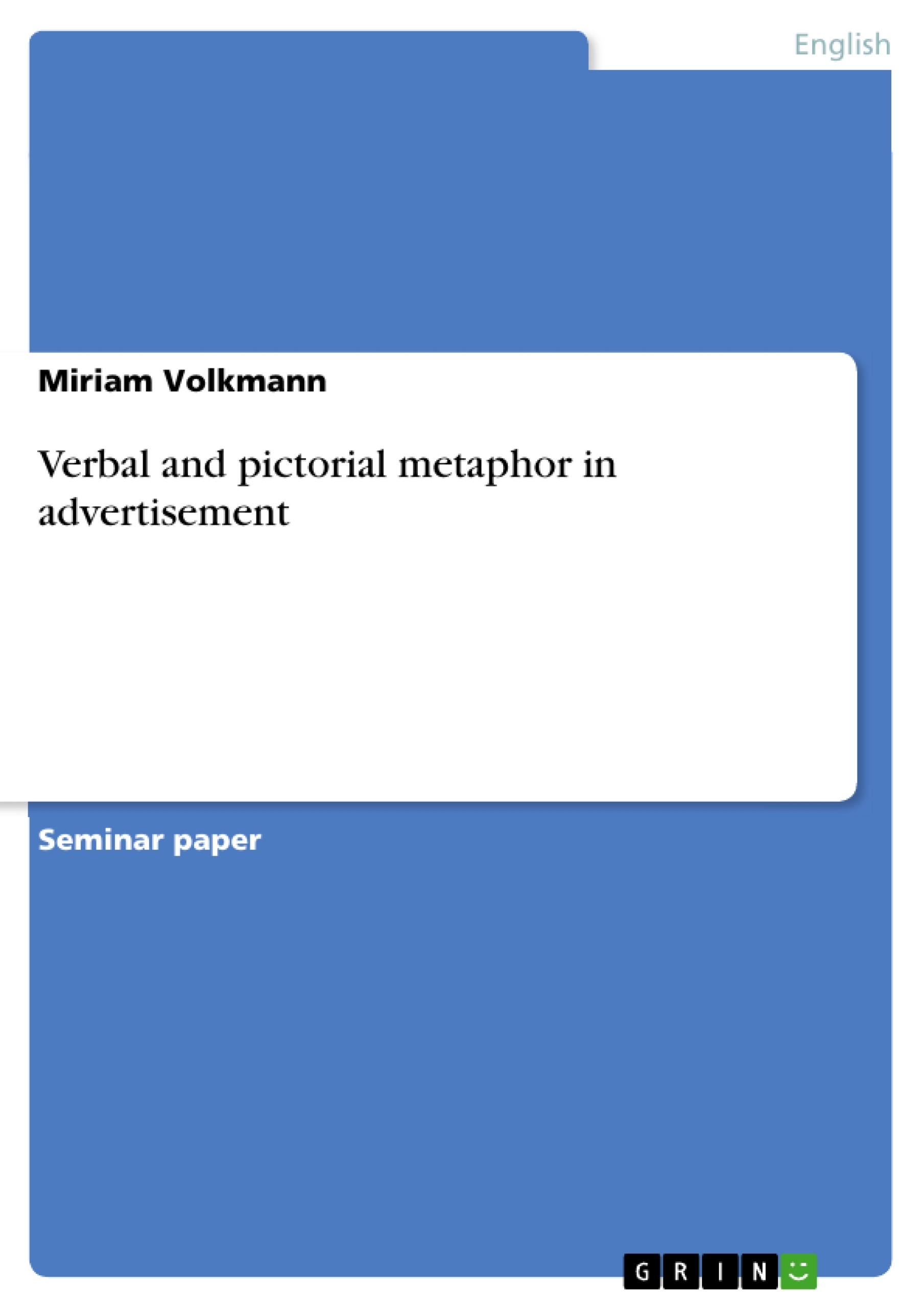The wordmetaphorhas its origin in the Greek wordmetaphorá,a noun meaning "a transfer, especially in meaning, from one word to another". It comes ultimately from the verbmetaphérein"transfer, carry over", composed ofmeta-"over, across" andphérein"carry, bear". (cf. The Cambridge Encyclopaedia 1990→metaphor). Throughout the centuries theorists have tried to define general rules for this transfer in meaning and have generally considered possible underlying mechanisms of this fascinating phenomenon. The early theories, dating back in history as far as Aristotle’s times, see metaphor as a figure of speech and therefore alanguagephenomenon. This view remained dominant until the middle of the 20thcentury, when cognitive linguists proposed that the locus of metaphor is not language, butthought,and therefore developed a whole new approach to metaphor. In the last decades some authors have also extended these findings from verbal metaphor to the realm of pictorial metaphor. In the first part of this paper I will give an overview of the development of these theories. I will put special emphasis on the contemporary theories of metaphor and especially those which deal with instances of so-called creative metaphor. I have selected those approaches which are most relevant for my analysis of a selection of press advertisements, involving pictorial and verbal-pictorial metaphor, which follows in the second part of this paper.
Table of Contents
- Introduction
- Theoretical background
- The classical view on metaphor
- Max Black's interaction view on metaphor
- The constructivist theory of metaphor: Lakoff & Johnson (1980) et al.
- Charles Forceville's approach to pictorial metaphor
- Case studies
- Ferrero Rocher advertisement (2003)
- Kellog's Special K Red Berries advertisement (2002)
- Nimble bread advertisement (2003)
- Conclusion
Objectives and Key Themes
This paper aims to provide an overview of the development of theories on metaphor, particularly focusing on contemporary theories of metaphor and those dealing with creative metaphor. It examines how these theories apply to the analysis of print advertisements, focusing on pictorial and verbal-pictorial metaphor.
- Development of theories on metaphor
- Contemporary theories of metaphor
- Creative metaphor
- Analysis of print advertisements
- Pictorial and verbal-pictorial metaphor
Chapter Summaries
The introduction provides an overview of the development of theories on metaphor, emphasizing the shift from a classical view of metaphor as a figure of speech to a cognitive view that sees metaphor as a fundamental aspect of thought.
The theoretical background chapter explores various perspectives on metaphor, beginning with the classical comparison view and progressing to Max Black's interaction view and the constructivist theory of metaphor by Lakoff & Johnson. It concludes with Charles Forceville's approach to pictorial metaphor.
The case studies section analyzes three print advertisements for food products, examining the use of pictorial and verbal-pictorial metaphor within each advertisement.
Keywords
This paper focuses on the concepts of metaphor, particularly its application in advertising discourse. Key areas of focus include classical and contemporary theories of metaphor, creative metaphor, and the analysis of pictorial and verbal-pictorial metaphor in print advertisements.
- Arbeit zitieren
- Miriam Volkmann (Autor:in), 2004, Verbal and pictorial metaphor in advertisement, München, GRIN Verlag, https://www.grin.com/document/57993



